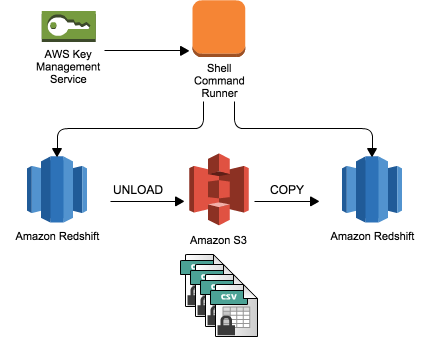

Therefore, as says, ALLOWOVERWRITE only overwrites files that share the same names as the incoming file name. Amazon Redshift Spectrum uses the functionally-infinite capacity of Amazon Simple Storage Service (Amazon S3) to support an on-demand compute layer up to 10 times the power of the main cluster, and is now bolstered with materialized view support. Are you using the data in a different business tool Gathering data is great, but at some point, you'll want to do something with it. UNLOAD command is also recommended when you need to retrieve large result sets from your data warehouse. There are different ways to get the job done, but which way is the best depends on your situation. With the UNLOAD command, you can export a query result set in text, JSON, or Apache Parquet file format to Amazon S3. You can't specify the `CLEANPATH` option if you specify the `ALLOWOVERWRITE` option. The first step in this process is always the same: Ask yourself why you're unloading data to begin with. Files that you remove by using the `CLEANPATH` option are permanently deleted and can't be recovered. For information, see Policies and Permissions in Amazon S3 in the Amazon Simple Storage Service Console User Guide.

You must have the s3:DeleteObject permission on the Amazon S3 bucket.
#Redshift unload to s3 parquet drivers#
The Data API simplifies access to Amazon Redshift by eliminating the need for configuring drivers and managing database connections. If you include the PARTITION BY clause, existing files are removed only from the partition folders to receive new files generated by the UNLOAD operation. Unloading a file from Redshift to S3 (with headers) Connecting to Redshift Running queries on Redshift Using the UNLOAD command Include the headers of the. The Amazon Redshift Data API simplifies data access, ingest, and egress from programming languages and platforms supported by the AWS SDK such as Python, Go, Java, Node.js, PHP, Ruby, and C++. The CLEANPATH option removes existing files located in the Amazon S3 path specified in the TO clause before unloading files to the specified location. If ALLOWOVERWRITE is specified, UNLOAD overwrites existing files, including the manifest file. Note the difference, from the documentation (Perhaps AWS could clear this up a bit more): ALLOWOVERWRITEīy default, UNLOAD fails if it finds files that it would possibly overwrite. UNLOAD uses the MPP capabilities of your Amazon Redshift cluster and is faster than retrieving a large amount of data to the client side. You can unload data into Amazon Simple Storage Service (Amazon S3) either using CSV or Parquet format. Amazon Redshift represents SUPER columns in Parquet as the JSON data type. To prevent redundant data, you must use Redshift's CLEANPATH option in your UNLOAD statement. If you’re fetching a large amount of data, using UNLOAD is recommended. You can unload tables with SUPER data columns to Amazon S3 in the Parquet format.


 0 kommentar(er)
0 kommentar(er)
